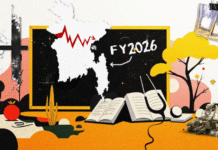Babar Ayaz
What is Bangladesh today was not made in those crucial eight months. It was a consequence of the wrongs done to the people of East Pakistan
Each year for the last 43 years we discuss the separation of East Pakistan in December. Much of the discussion is around the military operation rashly started in early 1971. Of course that was a major blunder of the establishment of that time.
But what is Bangladesh today was not made in those crucial eight months. It was a consequence of the wrongs done to the people of East Pakistan by both the West Pakistan ruling classes and the military who wanted to rule the eastern wing as a colony.
For East Pakistan, it was thus a liberation movement that was supported by the Indian government because we provided them an opportunity to prove that the Two-Nation Theory was fragile.
Soon after Pakistan was established the Muslim League leaders led by the then prime minister Liaquat Ali Khan thought it appropriate to impose Urdu as the only national language in February 1948.
Mohammed Ali Jinnah jumped into this debate on March 21, stating that: “let me make it clear to you that the state language of Pakistan is going to be Urdu and no other language.”
This was not acceptable to the Bengalis because they would have been placed in a disadvantageous position in competition with the Punjabi and Mohajir west Pakistanis, who had a better understanding and command of Urdu.
The protests continued, and then took a violent turn on February 21, 1952 when the state government opened fire on the protesting students. According to different accounts, seven to nine students died and several were injured. The attempt by the students to construct a memorial (Shaheed Minar) was also foiled, though eventually, the government had to give in. This memorial became a rallying point for Bengali nationalists even during their independence war.
After giving the East Bengalis a ‘Shaheed Minar’, it was finally agreed in the third draft of the constitution in 1954 that Bengali and Urdu would be the official languages of the country. “At the same time it provided for the use of English as the “official language of the country for twenty years” (Mehrunnisa Ali, 1966).
But it was an expensive trade-off for the Bengalis as they had to accept the perfidious idea of ‘One Unit’, thereby giving away their majority in the assembly. Not only that, once all of West Pakistan was declared one province, what was called East Bengal in the official documents until 1954 was renamed East Pakistan. Let us take a cursory look at a few disparities:
The total government expenditure in 20 years (1950-70) in Pakistan was $30.95 billion, out of which West Pakistan extracted the lion’s share of $21.49 billion – meaning over 69 percent – while East Pakistan, despite having 55 percent of the population, was doled out only $9.45 billion, which was just 30.45 percent of the total.
This distribution of resources was in sharp contrast to the income generated by both East and West Pakistan. All through the 24 years, East Pakistan had enjoyed foreign trade surplus.
In a paper titled ‘Why Bangladesh’, a group of scholars in Vienna collected data from the government of Pakistan’s official papers showing how East Pakistan was exploited by West Pakistan.
Taking stock of the foreign trade they pointed out: “In foreign trade East Pakistan exports constituted 59 percent of the total but imports only 30 percent of the total imports…During the same period West Pakistan earned 41 percent of the total foreign exchange and was allowed 70 percent of the foreign exchange earnings.”
While the surplus generated by East Pakistan was invested in the infrastructure and industry of West Pakistan, it was a secured market for the West Pakistani goods. Between 1964 and 1969 West Pakistan exported goods worth Rs5.29 billion to East Pakistan, while it imported goods of Rs3.17 billion.
Of the total foreign assistance almost 80 percent was consumed by West Pakistan. On the whole, again according to the Vienna Group, 77 percent of the funds allocated for development went to West Pakistan in the first 20 years. Not only were all the major investments in the jute and paper industry in East Pakistan owned by the big business houses of West Pakistan, East Pakistan was their undisputed market of over 50 million people. It was because of the loss of this colony that Pakistan had to devalue its currency by 135 percent in 1972 and its textile and consumer industry had a great fall.
The East Bengal middle classes were also bitter because of their meagre share in government services. For example, by 1971 the share of 54 percent of East Pakistan’s Bengalis in the central civil services was 16 percent; in foreign services, 15 percent; in the army, out of total 17 generals, there was only one Bengali. And in PIA, the state-owned airline, only 280 employees were from East Pakistan as against 7,000 from West Pakistan.
I spoke with General (r) Tikka Khan, when he was the secretary general of the PPP. To my observation that he shouldn’t be talking about democracy because they had killed over 250,000 Bengalis in East Pakistan, his simplistic answer was: “You people in the media always exaggerate such figures, only 35,000 Bengalis were killed during the military operations.”
Whether it is three million as claimed by Bangladesh or 35,000, it doesn’t matter. Thirty-five thousand is not a small figure either. The real figure of Bengalis killed may be somewhere between the two claims. This does not include the killings of the Biharis and West Pakistani civilians in reaction to the operation.
The Germans have museums to tell the future generation what the Germans did wrong. Will we be able to apologise for the wrongs done to East Pakistan and move on instead of living in our cocoon believing that it was all an Indian conspiracy?
Source: Dhaka Tribune











Thank you Mr Ayaz.Today I realized that some Pakistanis have shame amd dignity.Everyone of them are not Animalistic like Ayub,Yahya ,Tikka,Forman
56000-57000 died in civil war as inquiry conductrd br rahim insp gen police BD.when sh mujib read that file he threw on the floor and said in anger i told u 3000000 but u did not even wrfite 300000.
MYTH BEYOND 3 MILLION by Manan from BD